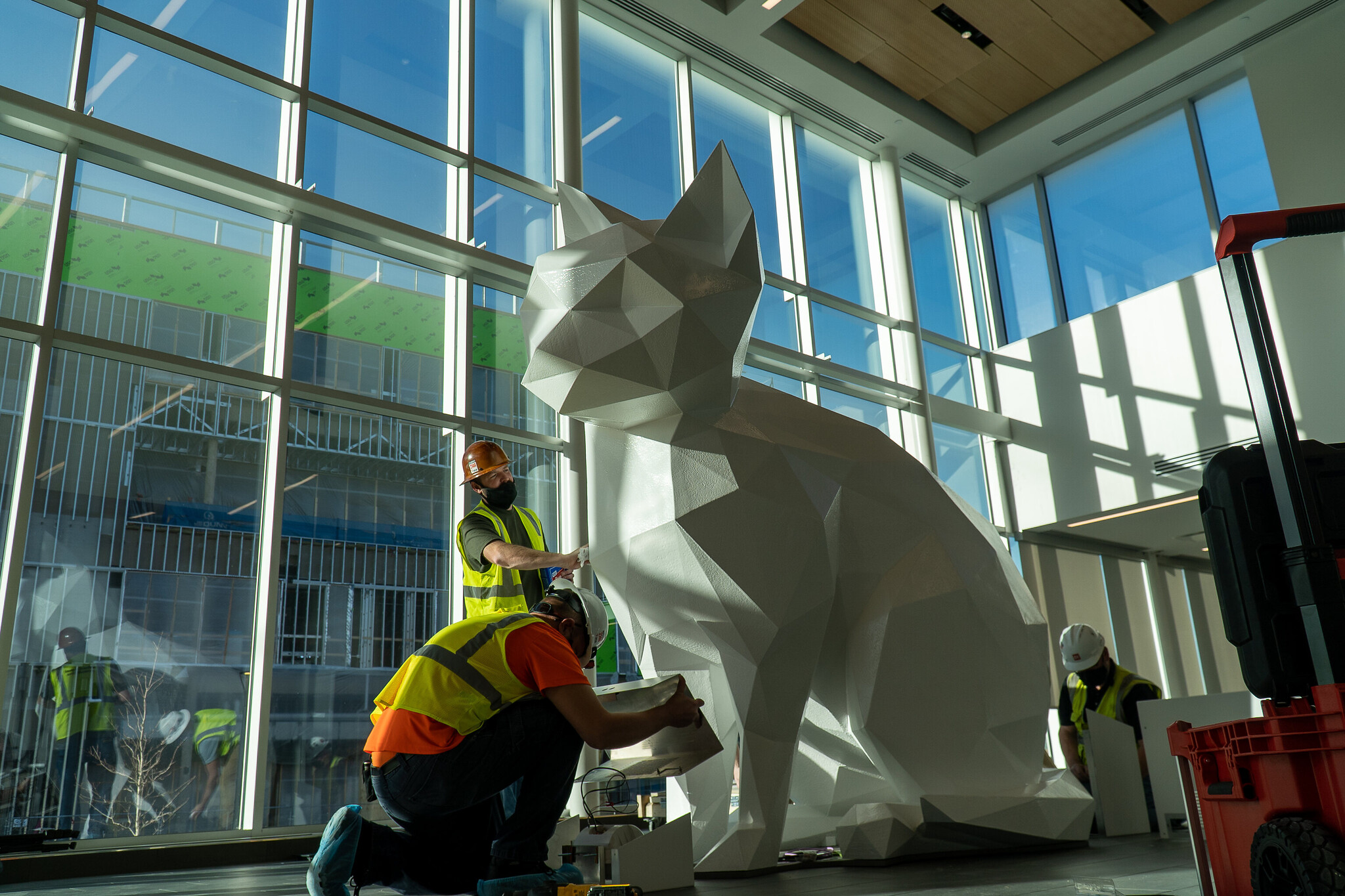
As the National Western Stock Show opens its doors (and cattle gates) this year for the first time since January 2020, visitors will also be able to set foot on the new CSU Spur campus for the first time in, well, forever.
The first of Spur’s three themed buildings, Vida, opens Jan. 7. Spanish for “life,” Vida boasts interactive exhibits and educational opportunities with a focus on animal and human health. Showcasing outreach experiences from the College of Veterinary Medicine and Biomedical Sciences, visitors can engage with veterinary medicine throughout the building.
“Spur gives us the opportunity to take the university to them,” said Thom Hadley, executive director of strategic initiatives for the college. “We want to reach individuals that might not think about college or a career in health as an option – this gives them an opportunity to see it in action.”
Dumb Friends League Veterinary Hospital
Opening its second area clinic at Spur, the Denver Dumb Friends League will be able to reach more people with reduced, donor-subsidized veterinary care for pets. And starting this May, fourth-year students from CSU’s Doctor of Veterinary Medicine Program will help provide patient care as part of their clinical rotations.
“This rotation is special because veterinary students can utilize skills in incremental and spectrum of care for surgical and medical cases,” said Dr. Danielle Frey, director of international and regional student experiences for the D.V.M. Program. “These skills are critical to increasing access to veterinarians for pet owners who experience different barriers to care for their animals.”
While increasing access to veterinary care for low-income households and providing students essential training, the college invites Spur visitors to watch it all in action through a glass-enclosed surgical suite with microphones for staff to interact with observers while performing physical examinations, dental procedures, and even surgery.
Aiming to further inspire K-12 students to consider careers in animal welfare and veterinary medicine, aspiring veterinarians and curious kids alike can explore different careers in veterinary medicine, learn how to do an exam on an animal, and see real X-rays up close in a mock exam room.
CSU Equine Sports Medicine and Rehabilitation Center
Horses will have improved access to care, too, with the opening of an equestrian facility for the delivery of full-service veterinary and rehabilitation services that are the best of the best with state-of-the-art technology.

CSU specialists boarded in equine sports medicine and rehabilitation will lend their expertise to Stock Show and Spur campus visitors, as well as equine patients. Equine rehabilitation patients will be cared for daily by an onsite veterinarian and veterinary technician team. Horses will have access to an array of cutting-edge equipment installed in the building, including in-ground and above-ground underwater treadmills, standing cold saltwater spa, solarium, whole-body vibration plate, and a six-horse walker.
During the Stock Show, trained horses from the Temple Grandin Equine Center, also housed in the Vida building, will be on hand to participate in twice-a-day live demonstrations of the underwater treadmills Jan. 7-23 at 11 a.m. and 1 p.m. Throughout the year, guided tours and demonstrations will also be available to K-12 school groups.
“Our amazing partnership with the Temple Grandin Equine Center means we can rely on a steady stream of horses well-acclimated to the equine rehabilitation equipment for educational demonstrations,” said Dr. Melissa King, associate professor of equine sports medicine and rehabilitation and director of the equine rehabilitation center at Spur. “In return, we get to help those horses stay fit and well-conditioned for their critical roles in helping rehabilitate humans.”
Equine veterinarians serving horse show clients at the National Western Complex throughout the year will have access to the sports medicine facility, including exam rooms, lameness asphalt runways, and arenas.
Virtual Anatomy Experience
Helping visitors understand some of the fundamentals of veterinary (and human) medicine are virtual reality headsets loaded up with 3D anatomy software – the very same program CSU uses to teach undergraduate, graduate, and veterinary students anatomy concepts. The self-guided experience will allow participants to explore and interact with different parts of dog, cat, horse, and cow anatomy.

“Veterinary medicine is very real, very raw sometimes; it’s not sugar-coated or fluffy and fuzzy like it’s portrayed in the media,” said Dr. Christianne Magee, associate professor in biomedical sciences and director for Virtual Veterinary Educational Tools. “I think kids should get a taste of that if they are considering a career in veterinary medicine.”
With the help of virtual reality, students can get a hands-on feel for what it’s like to interact with animal anatomy – without having to get their hands dirty. Rotating through different programs throughout the year, visitors can expect a unique virtual reality experience every time